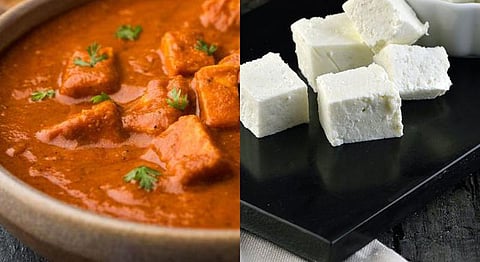
- HOMEGROWN WORLD
- #HGCREATORS
- #HGEXPLORE
- #HGVOICES
- #HGSHOP
- CAREERS
- ABOUT US
- CONTACT US

Cementing its position as the most appetizing dish in the vegetarian thaali is ‘Paneer’ that claims it’s position as India’s very own cottage cheese.With its versatility, mild flavour, and rich nutrient value, Paneer is a true delicacy that gets us all cheesy (yes, pun intended!).
While we all consider Paneer to be a household staple, very few of us know that indigenous cheese’s fascinating origins!
A soft, mild yet unsalted cheese variant, Paneer is a much-loved delicacy traditionally churned from buffalo’s milk and is consumed widely in North India along with other parts of the subcontinent like Afghanistan, Nepal, Bangladesh, and Pakistan.
It is traditionally is made by curdling hot milk using lime juice, vinegar, yogurt, or citric acid which results in a soft, creamy cheese that is firm but doesn’t crumble easily. An easy to make cheese alternative, Paneer is used to replace Tofu as well as many other cheeses in most recipes.
It is said that the indigenous cheese owes its invention to the age-old tradition of cattle-rearing on the subcontinent, as do other dairy products like ghee and lassi. The contemporary version of cheese-making process finds its origin from the Indus Valley Civilization which referred to a process of curdling milk with a special variety of green leaves, berries, barks, and yogurt says MarigoldMaison.
However, the Aryan invasion put a stop to this practice as they believed cows to be sacred, and ‘curdling’ its milk, which was revered food ingredient in Ayurveda, was seen as a taboo.
Modern Paneer is usually traced back to the Persian and Afghan rulers who introduced it in the 16th century, primarily in North India, where it was made with either goat or sheep rennet. The term ‘Paneer’ comes from the word ‘peynir’, which just means ‘cheese’ in the Turkish and Persian Languages as per MarigoldMaison.
Today, Paneer is derived from the Portuguese method of ‘breaking’ milk with an acid like lemon juice, which was introduced in the 17th century.
No matter what the occasion is or what time of the day it is, a generous serving of Palak Paneer or a plate of some crisp Paneer Pakoras is assured to fulfil all our cravings. Go ahead and try your hand at churning up some good ol’ homemade Paneer and explore the masterchef in you!
If you enjoyed this article we suggest you read:
